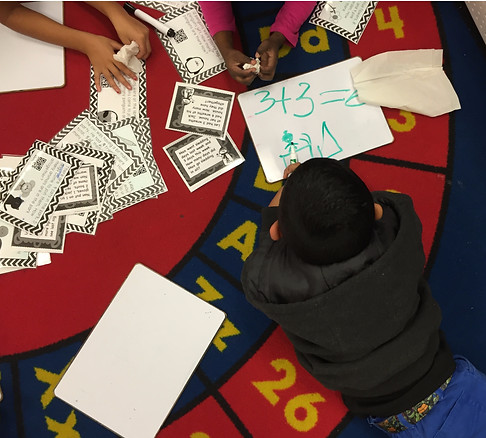HALEY BRITTINGHAM ⍚ PORTFOLIO
QUALITATIVE ⍚
Mathematics
Work Samples
For the following work samples, each student has one problem from the MOY formative math assessment and a similar problem that was on the EOY summative math assessment. The main difference between the MOY and EOY assessment for these particular problems was the complexity of how they solved it and being able to write an equation that "matches" the story. For the MOY assessment, they were not required to write an equation, but for the EOY assessment, it was needed to receive a proficient score.
Student A
This student was solving a Compare - "How many fewer?" question. On the MOY assessment, he relied on drawing pictures to solve the problem and then got confused in which circles were the correct answer - the crossed out ones or the ones left over. Between the MOY and EOY, this student practiced his different word problem strategies and was able to successfully answer all parts of the similar question type on the EOY assessment. He also was able to write equations as part of his "thinking" process as well as an equation that matches the story showing that he grew in his ability to answer this type of question from solely using pictures, as seen in the MOY assessment. Furthermore, he also used the relationship of addition and subtraction to check his work.
MOY - Formative Assessment
EOY - Summative Assessment
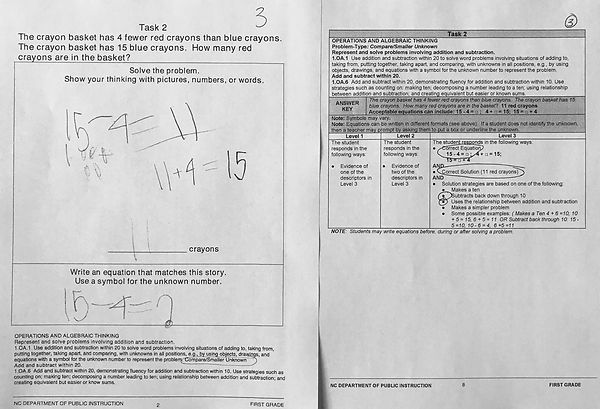
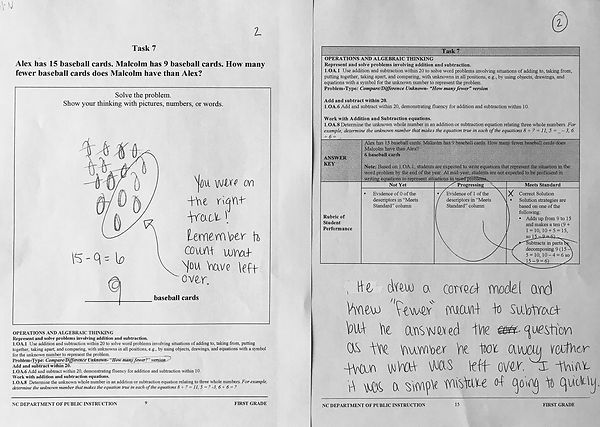
Test Instructions & Delivery
For both the middle of year (MOY) and end of year (EOY) assessments, students had two pencils, a folder desk divider that provided them privacy, and their test booklet which they were allowed to write in. They each had two reading books they were allowed to have under their seat, in case they finished a problem before others did so the whole class could move on to the next question as a group. On my end, I had a blank test shown on the smart board that I would use as I would read out loud each question, per the teacher requirements for administering the test.
The directions were as follows:
"Each student will have enough time to finish each problem. If you need more time to complete a problem, you have time at the end to finish. If you finish a problem and others are still working, you are to silently put your pencil down, flip your test booklet over, and read one of your books. If you choose to talk you will have to finish your test in Mr.C's office (our principal) because that is not fair for your classmates who are working extremely hard to do their best. I will read each question out loud, if you need me to repeat the question, silently raise your hand and I will repeat it to you. Remember to not move onto the next question, you are to read and wait for me to read each question and we will move on as a group."
Student B
This student struggled with Add to/Change Unknown problems and would often draw out all of the numbers from the word problem which is what she did on the MOY assessment causing her to then subtract but was left with the same total number. She received a 1, or not proficient score because she did not draw out the problem correctly or provide a correct answer.Through much practice between assessments, she was able to show her mastery of this problem type and solved it by drawing a ten rod and ones and then she noticed that the ones all together make a ten which was a key indicator of a proficient score for this problem. She also found the unknown number and correctly wrote the equation that matched the story.
MOY - Formative Assessment
EOY - Summative Assessment

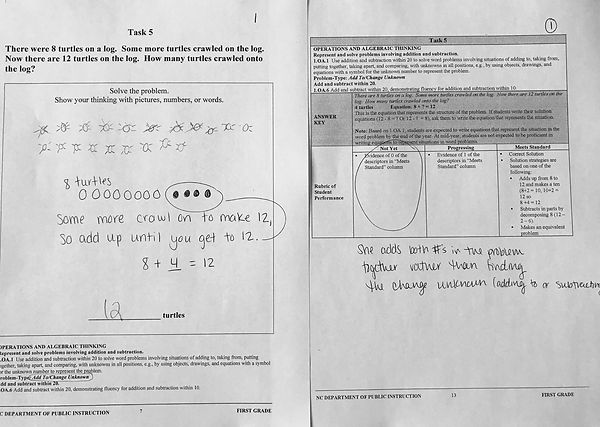
Student C
A common challenge in my class was a misrepresentation of the word problem with drawings. For this problem type, compare - "how many fewer," that was the case for this student's MOY assessment. She made a simple mistake, but this was quite common for this particular student as she would often rush in her drawings and work. Her work demonstrates growth as she was able to successfully answer the same question type on the EOY assessment by slowing down, being careful with her work, and checking it by solving differently by subtracting the ones' place - the five and four and then adding the leftover ten to get eleven. By the end of the year, she developed the habit of double checking her pictures to make sure they "matched the story."
MOY - Formative Assessment
EOY - Summative Assessment
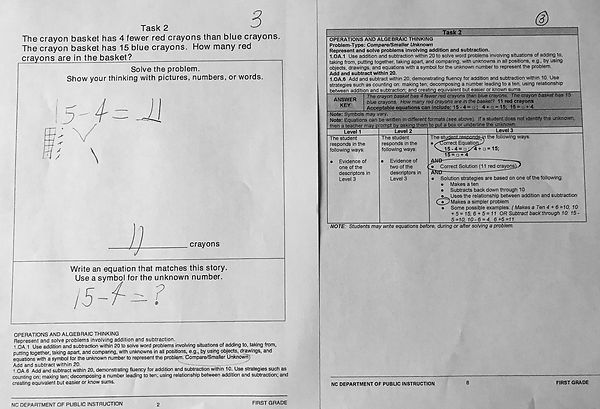
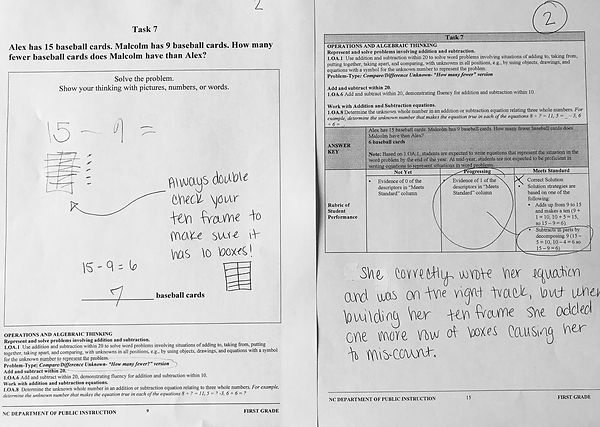
Reflection
Word problems proved to be quite challenging for my class early on in the year as they would often try to "guess" what the operation was before reading the problem carefully. To address this, I began teaching them the "five finger strategy" which included: reading the problem carefully, recording the facts, determining what it was asking us to do, solve the problem, and check our work. During lessons, we would practice solving problems step by step teaching them to be intentional and patient. Eventually, students were applying this strategy to their independent and group work.
During our center time, one center was always a designated word problem center with new problems added each week. The picture below on the right shows students solving word problems during center time. The instructional assistant would stay at this center to help students continue using the five finger strategy. This extra practice helped students grow dramatically in their word problem skills because they became more comfortable with the process and developed patience as they solved problems. Students were always encouraged to "share their knowledge" and would also learn by teaching others, as can be seen in the picture on the left.
All of these "pieces" of learning eventually led students to answer word problems correctly on a consistent basis resulting in dramatic academic growth for the whole class.

